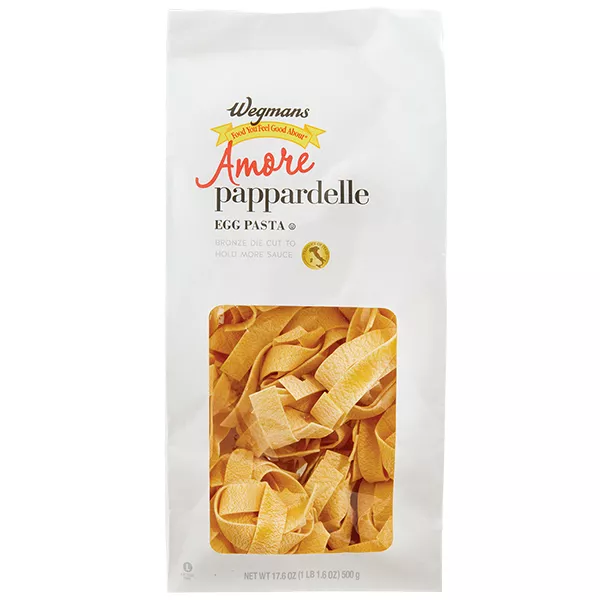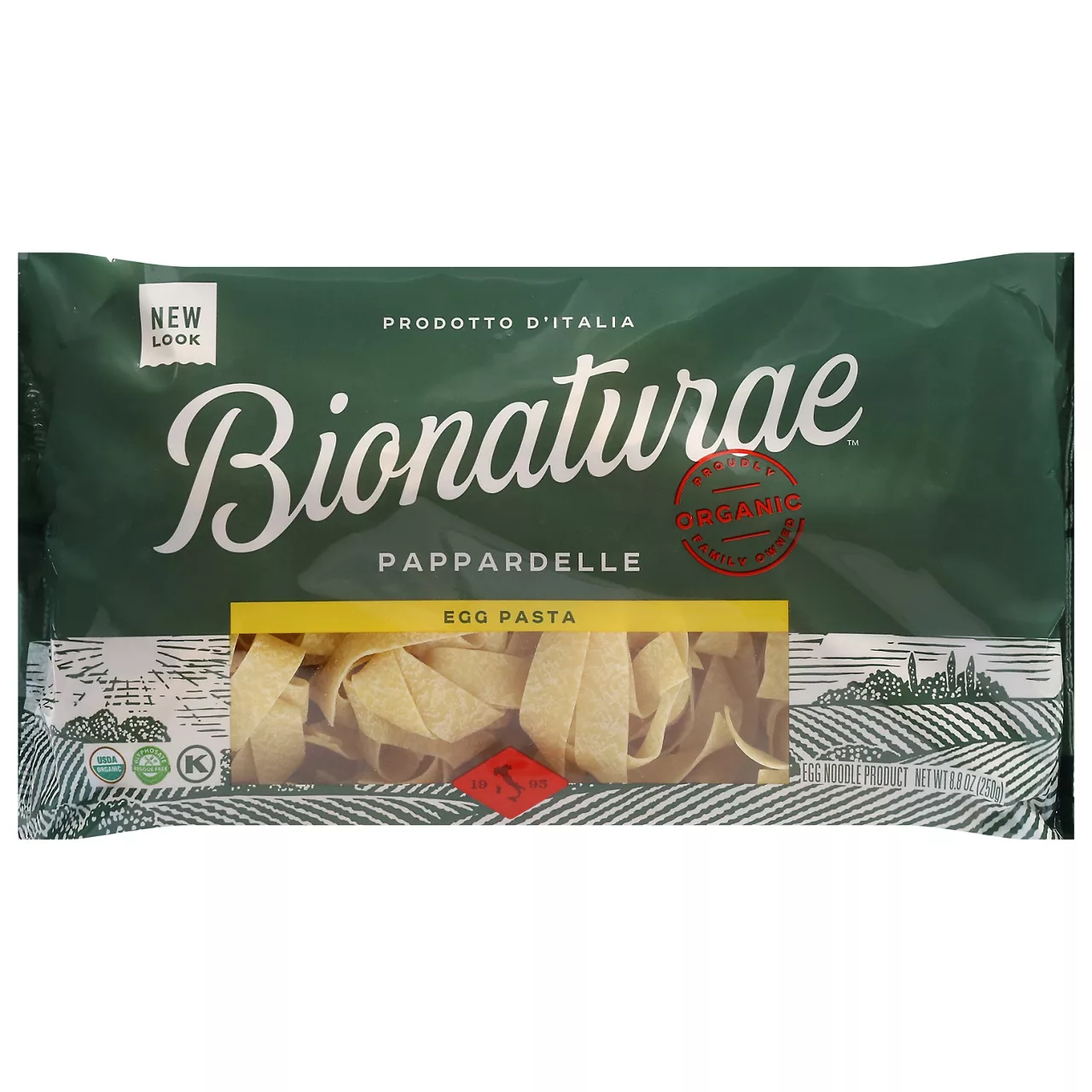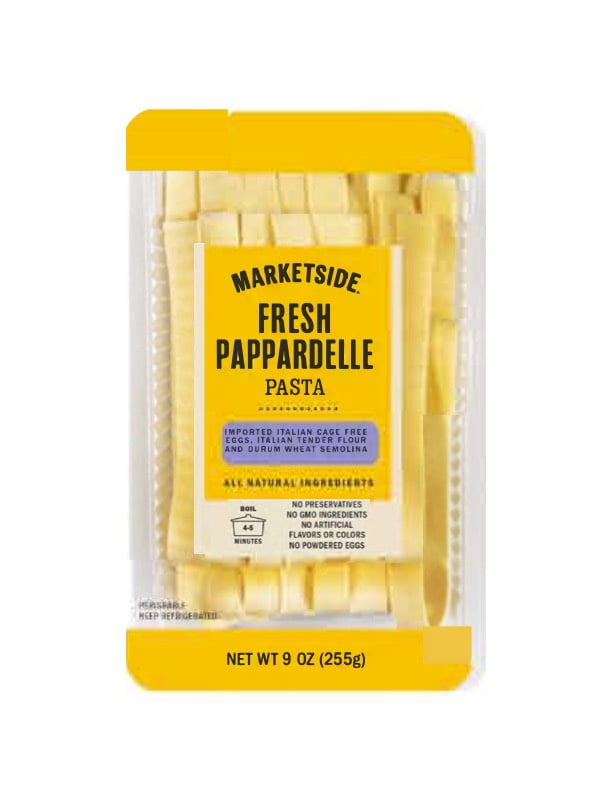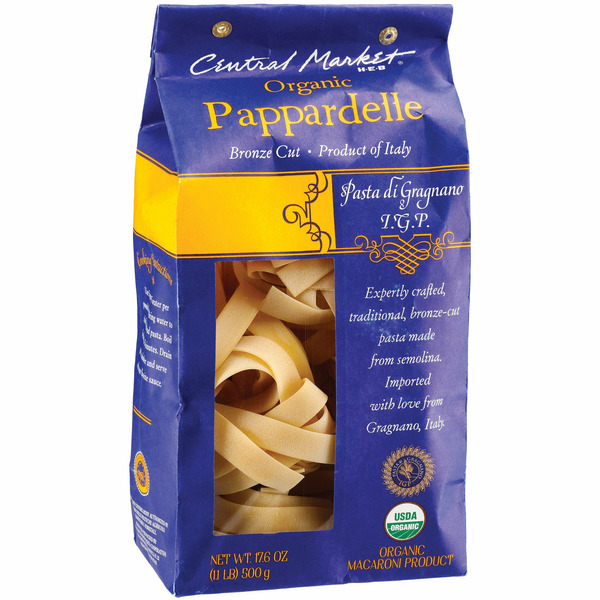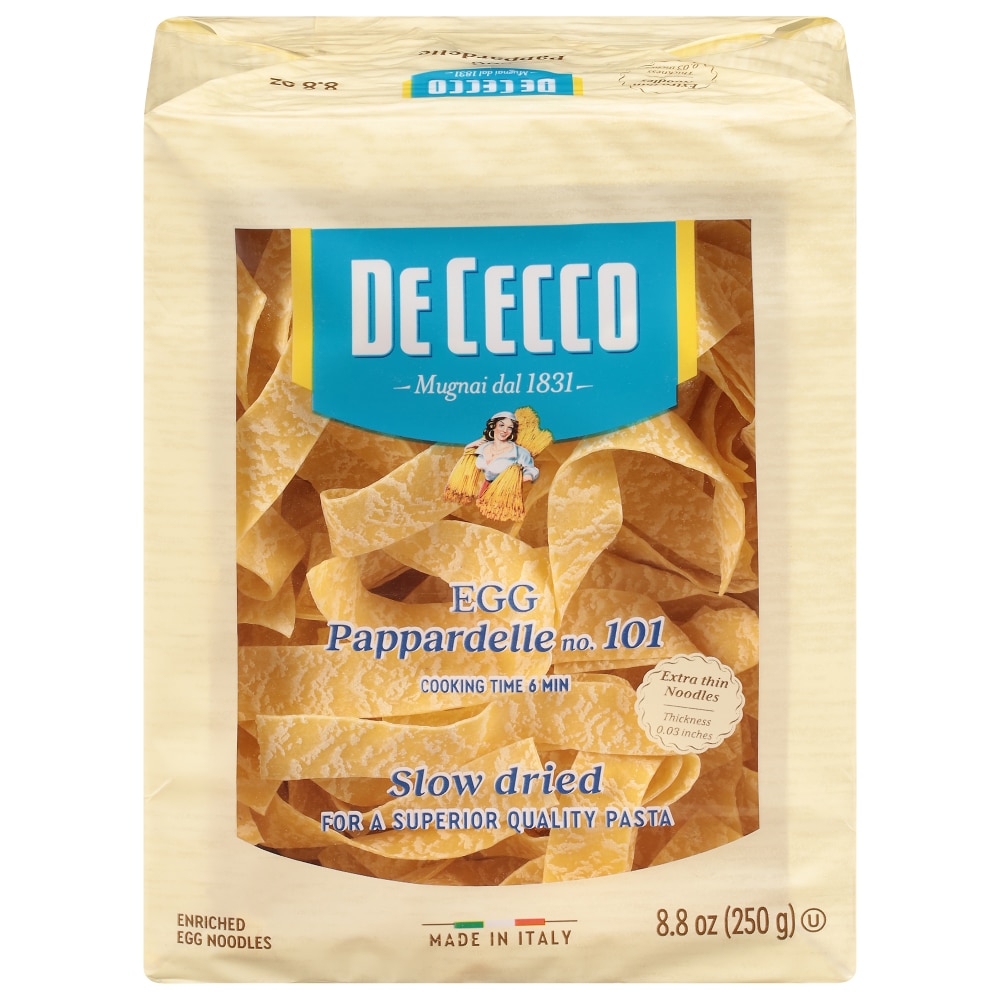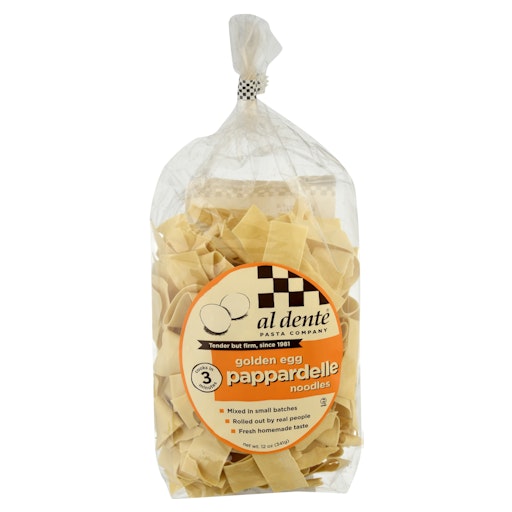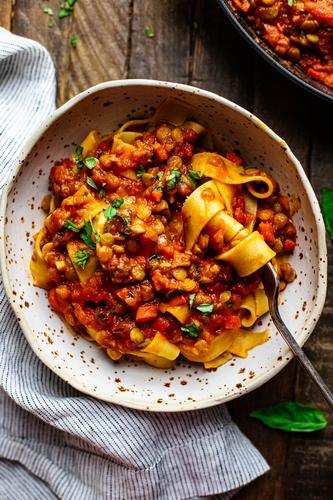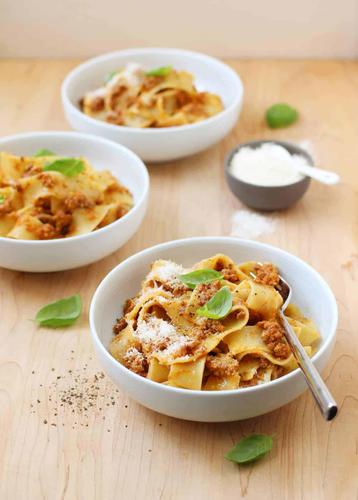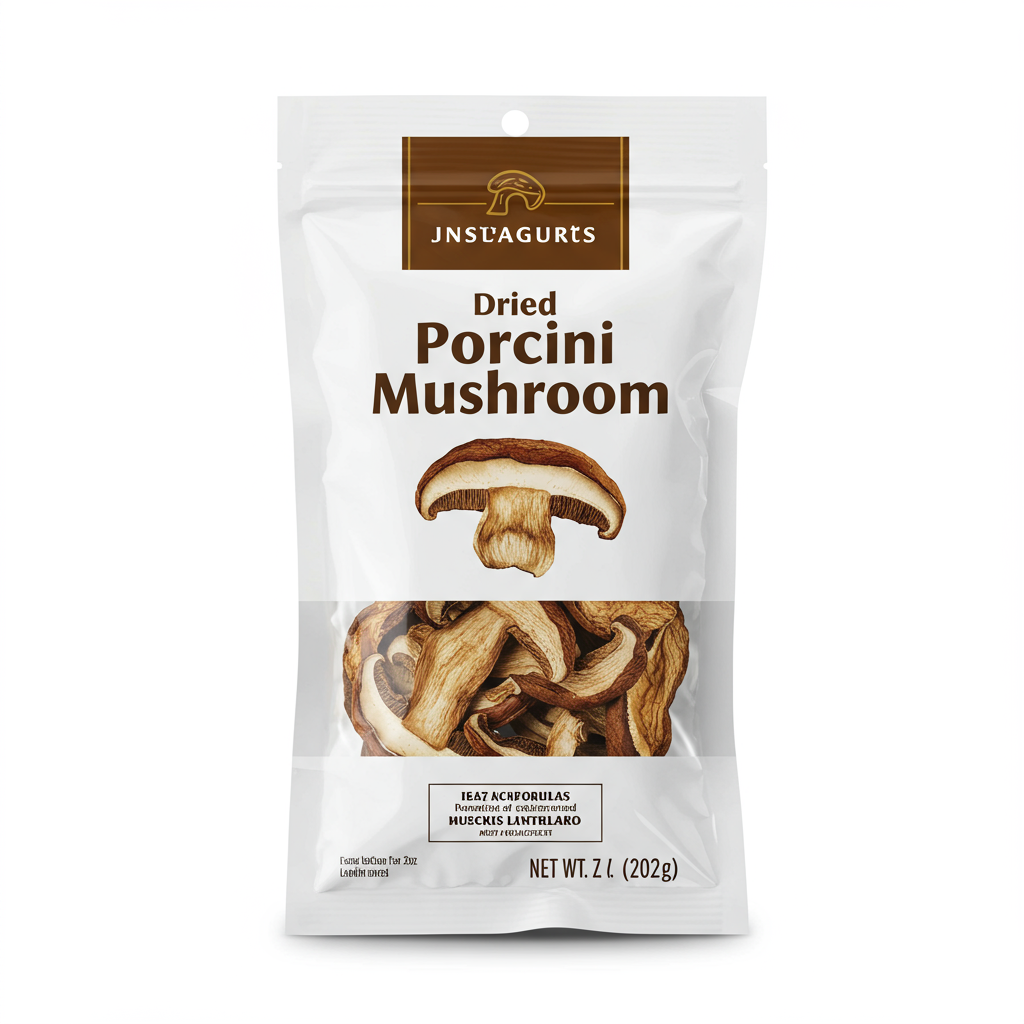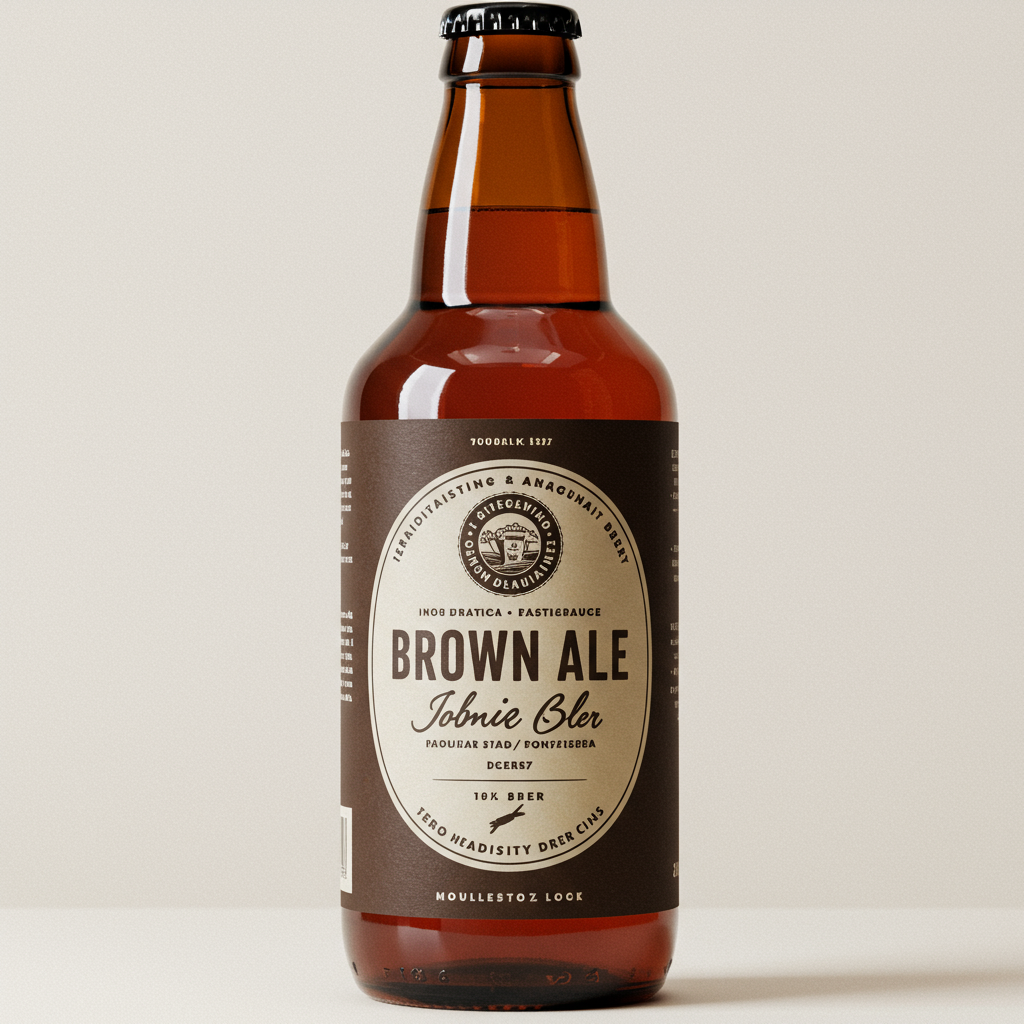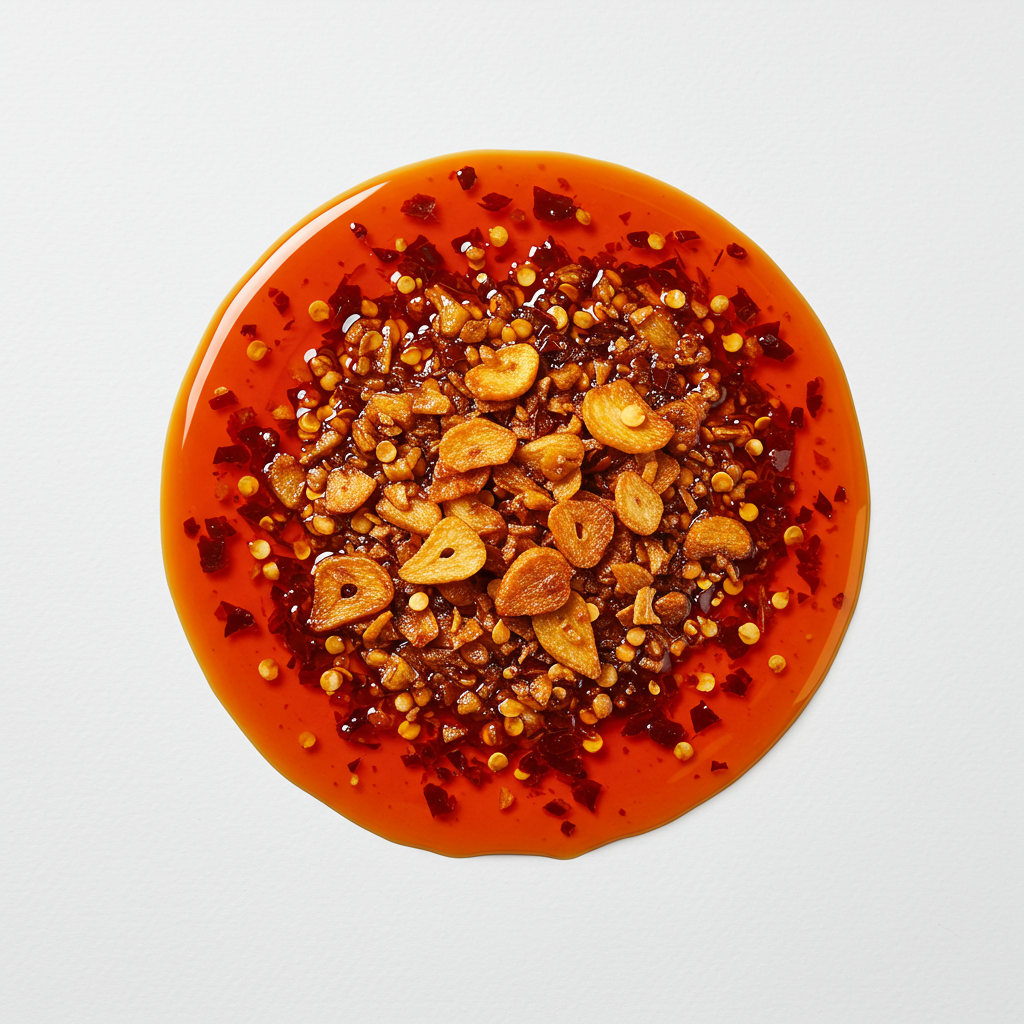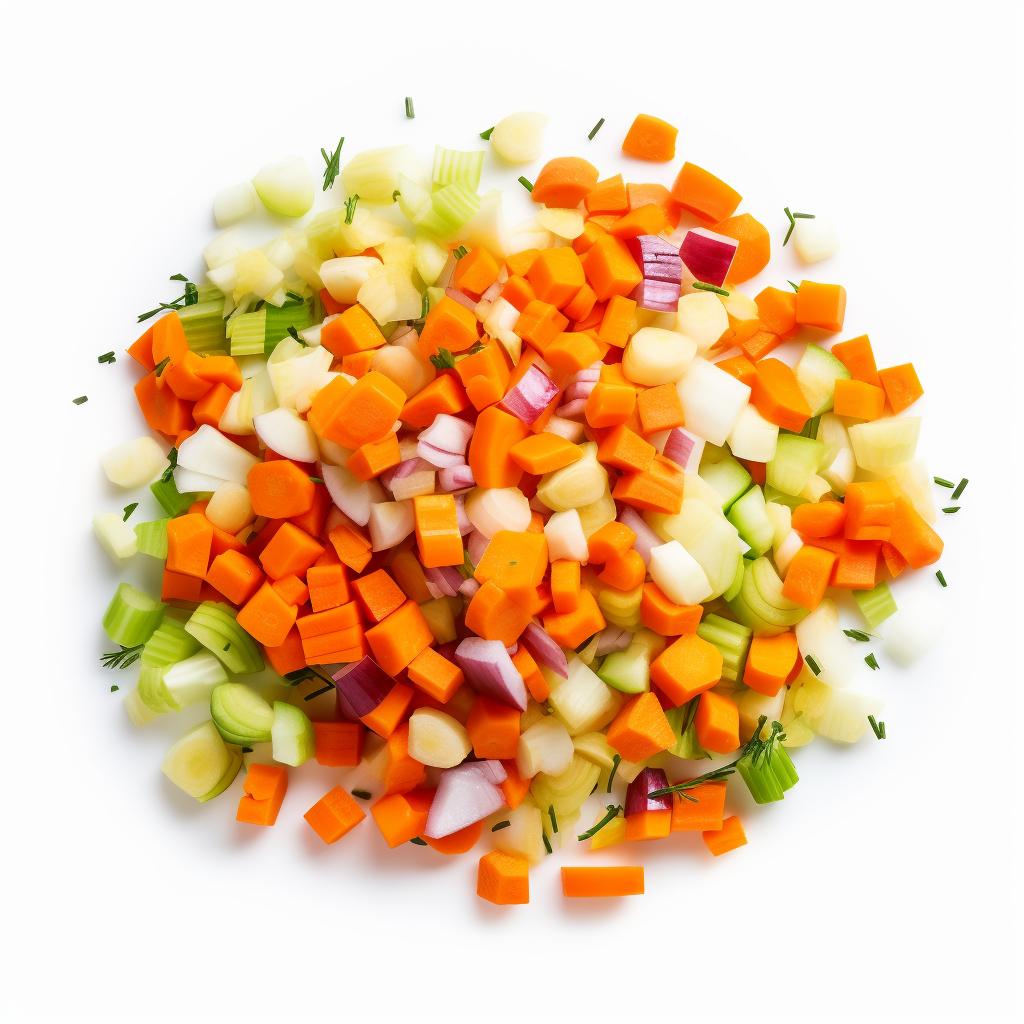MAIN DISHES
SIDE DISHES
Pappardelle
Pappardelle is a wide and flat type of pasta, traditionally used in Italian cuisine. Hailing from the regions of Tuscany and Northern Italy, this noodle is characterized by its broad shape, typically measuring around ¾ inch (2 centimeters) wide, with fluted edges that provide a satisfactory bite. Pappardelle is usually made from wheat or egg-based dough, giving it an ideal texture for absorbing rich and hearty sauces.
Pappardelle is often used in a variety of delectable pasta dishes, where it pairs exceptionally well with robust meat sauces such as ragù or wild boar, and bold, earthy ingredients like mushrooms or truffles. Home cooks and consumers can enjoy the convenience of both fresh and dried pappardelle available in stores, making it easy to create a satisfyingly flavorful and comforting meal.
79%
CARBS
4%
FAT
17%
PROTEIN
172 Pappardelle Products
Wegmans Amore Pappardelle Egg Pasta
Traditional Egg Pasta, 100% Organic Pappardelle
Egg Pappardelle Pasta
DeLallo Egg Pappardelle Pasta
Organic Pappardelle Pasta Nests
Marketside Fresh Pappardelle Pasta
Central Market Organic Macaroni Product, Bronze Cut Pappardelle
Signature Nested Pappardelle
De Cecco Egg Noodles - Pappardelle Shape
Al Dente Pappardelle Noodles, Golden Egg
Used In 9 Recipes
4
Easy Pappardelle with Creamy Roasted Red Pepper Pesto Sauce
Lemon-Garlic Shrimp Pappardelle
3
Creamy Quick-Fix Chicken Royale
3
Summer Pappardelle with Corn, Red Cherry Tomatoes, and Basil Mascarpone Sauce
7
Italian Spicy Sausage Pasta with Fresh Basil
20
Pappardelle with Corn, Blistered Tomatoes, and Basil Cream Sauce
1
Lentil Bolognese with Pappardelle Pasta
103
Ragù Bolognese: Authentic Italian Bolognese Sauce
Pappardelle Is Frequently Used With
Pappardelle FAQ
Often, people go wrong with pappardelle by either overcooking it or pairing it with the wrong type of sauce. Because of its thick and wide shape, pappardelle requires a longer cooking duration than thinner pasta varieties, typically around 7 to 12 minutes for dry pasta or 3 to 4 minutes for fresh. Overcooking pappardelle can result in a mushy texture that lacks bite and doesn't hold sauce well.
One key to getting the most out of pappardelle is to use it with robust, hearty sauces. Its wide shape and rustic texture can scoop up and hold onto thick meat sauces, creamy alfredo, or chunky vegetable sauces very well, delivering the most of flavors in each bite. Unfortunately, delicate broths or light and oily sauces tend not to cling to pappardelle as effectively.
Another important tip when cooking pappardelle is to always keep some pasta water set aside after boiling. Mixing in a bit of this starchy, salty water can help loosen the sauce if it's too thick and enable it to combine better with the pasta.
Finally, don't forget to season. Boiling your pasta in a well-salted water not only season it but also enhances the taste of the sauce that goes with it.
Do you need to add oil to the water when cooking pappardelle?
My pappardelle always sticks together, what am I doing wrong?
What goes well with pappardelle?
Should I undercook my pappardelle if I will be heat it again in the sauce?
How do I prevent my pappardelle from being too soggy?
What is the traditional sauce for pappardelle?
Can I use pappardelle in soups?
Can I substitute fettuccine or tagliatelle for pappardelle?
Can I make pappardelle from scratch?
How can I get the best out of store-bought dried pappardelle?
Expiration & Storage Tips
When does pappardelle expire?
Pappardelle, like most pastas, has a pretty decent shelf life. If unopened, a pack of dried pappardelle can last up to 3 years past the printed date on the package if stored properly. Once opened, you should aim to use it within 1-2 years. For fresh (refrigerated) pappardelle, it can last 1-2 weeks beyond the sell-by date if unopened and usually 3 to 5 days once opened. As for homemade pappardelle, it should be used within 3 days if refrigerated and up to 2 months if frozen.
How do you tell if pappardelle is bad?
Telling if pappardelle has gone bad is pretty simple. For dried pappardelle, if you notice a change in color or an off smell, it's likely gone bad. Additionally, any signs of bugs or weevils mean it's definitely time to toss it out. Fresh pappardelle, on the other hand, might develop mold or a slimy texture when going bad. In this case, don't consume it. If the pasta looks duller or darker than usual, or if it has a sour or off smell, those are clear signals that it's time to throw it out.
Tips for storing pappardelle to extend shelf life
• Store unopened dried pappardelle in a dry, cool and dark place such as a pantry or cabinet. Make sure it is sealed properly to avoid moisture or bugs.
• After opening, you can store the remaining dried pasta in a sealed container to keep it fresh and bug-free.
• To prolong the shelf life of fresh pappardelle, be sure to store it in the fridge, sealed well, preferably in air-tight containers.
• If you wish to keep your homemade pappardelle for an extended period, consider freezing it. Simply dust it with flour to prevent sticking, freeze in a single layer on a baking sheet, and then pack into airtight containers or freezer bags. You don't need to thaw it before cooking, simply add it to the boiling water while frozen.
EXPIRES WITHIN
19 - 29
MONTHS
Substitutes

Fettuccine Pasta
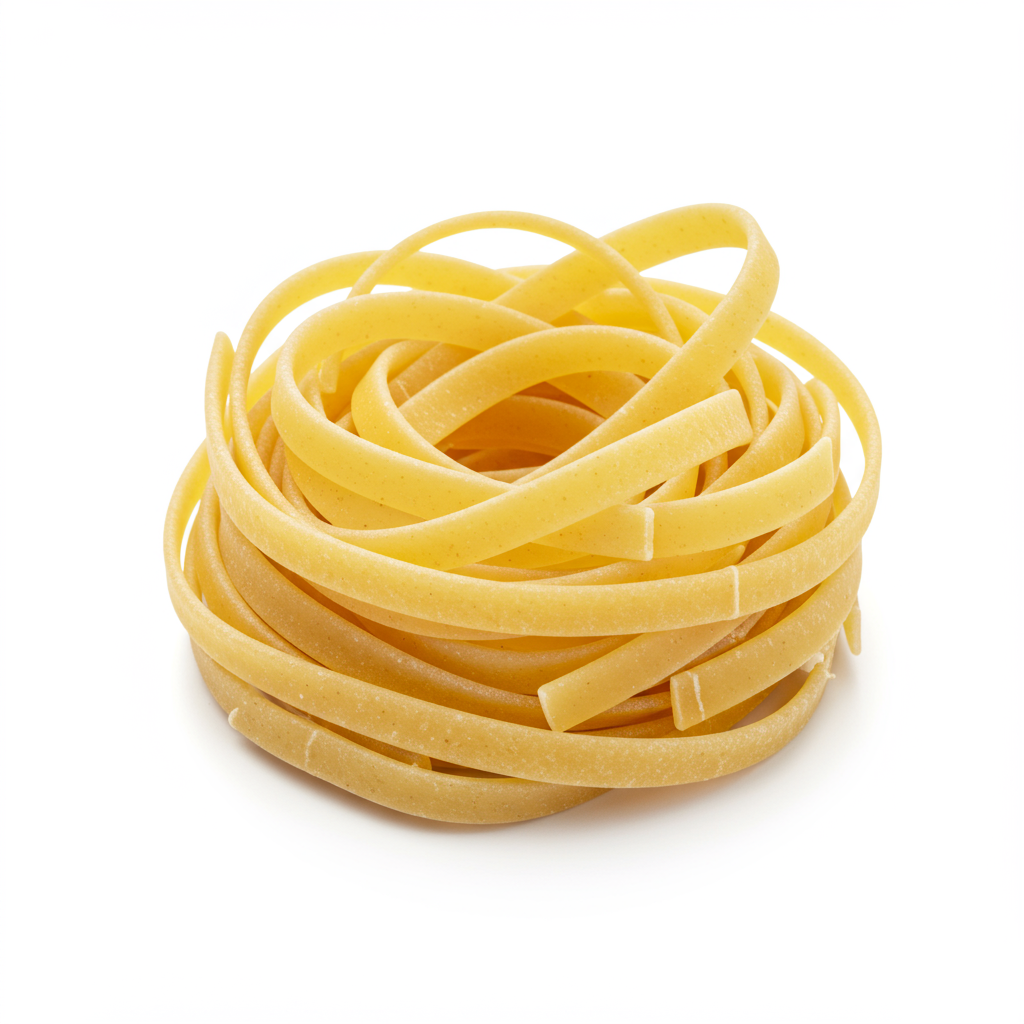
Gluten Free Fettuccine Pasta

Tagliatelle Pasta
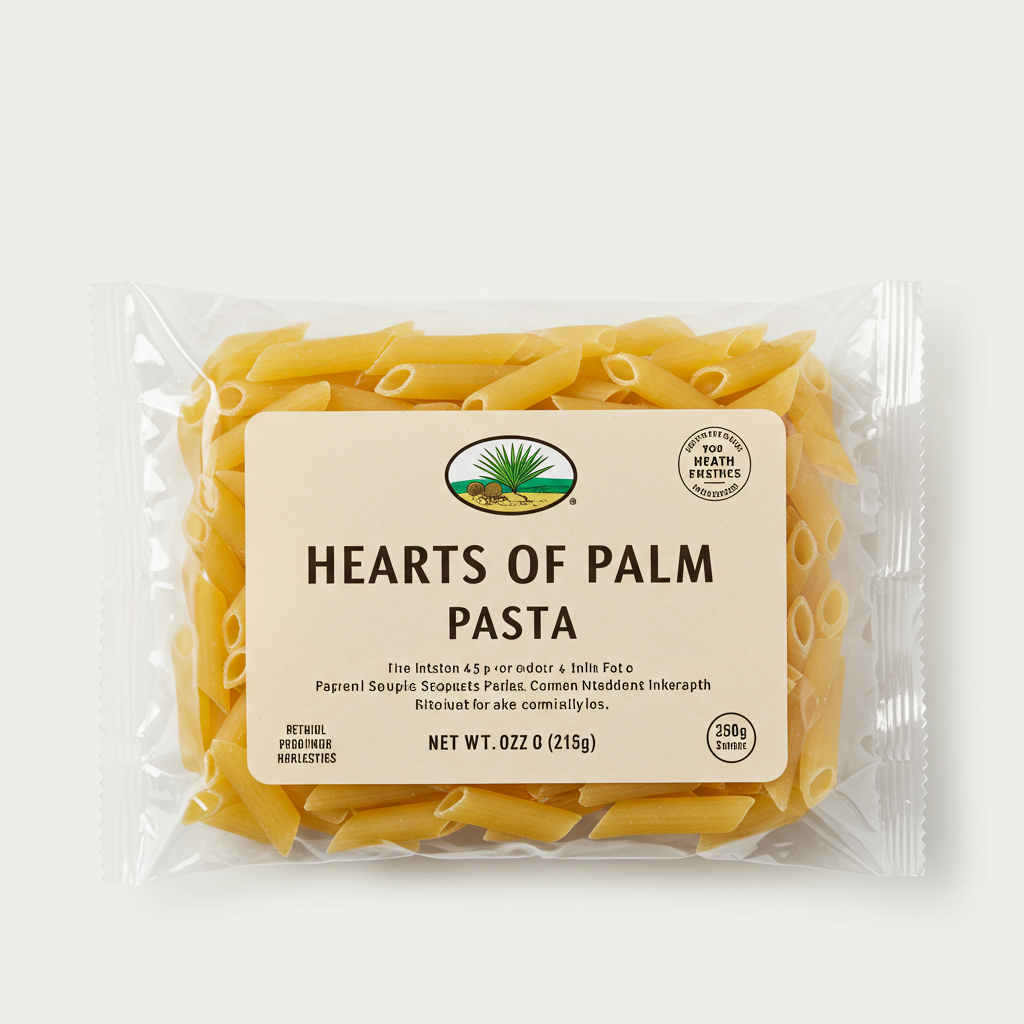
Hearts Of Palm Pasta
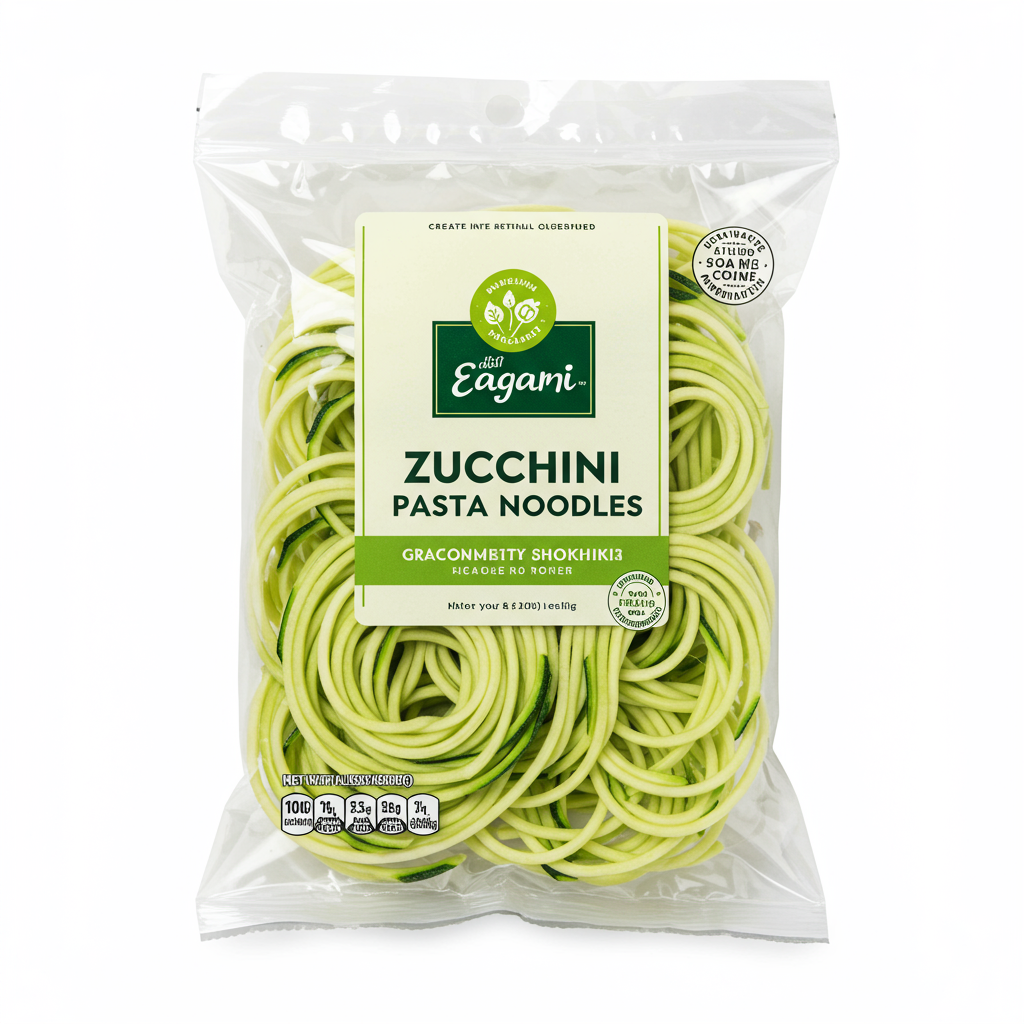
Zucchini Pasta Noodles

Bucatini Pasta
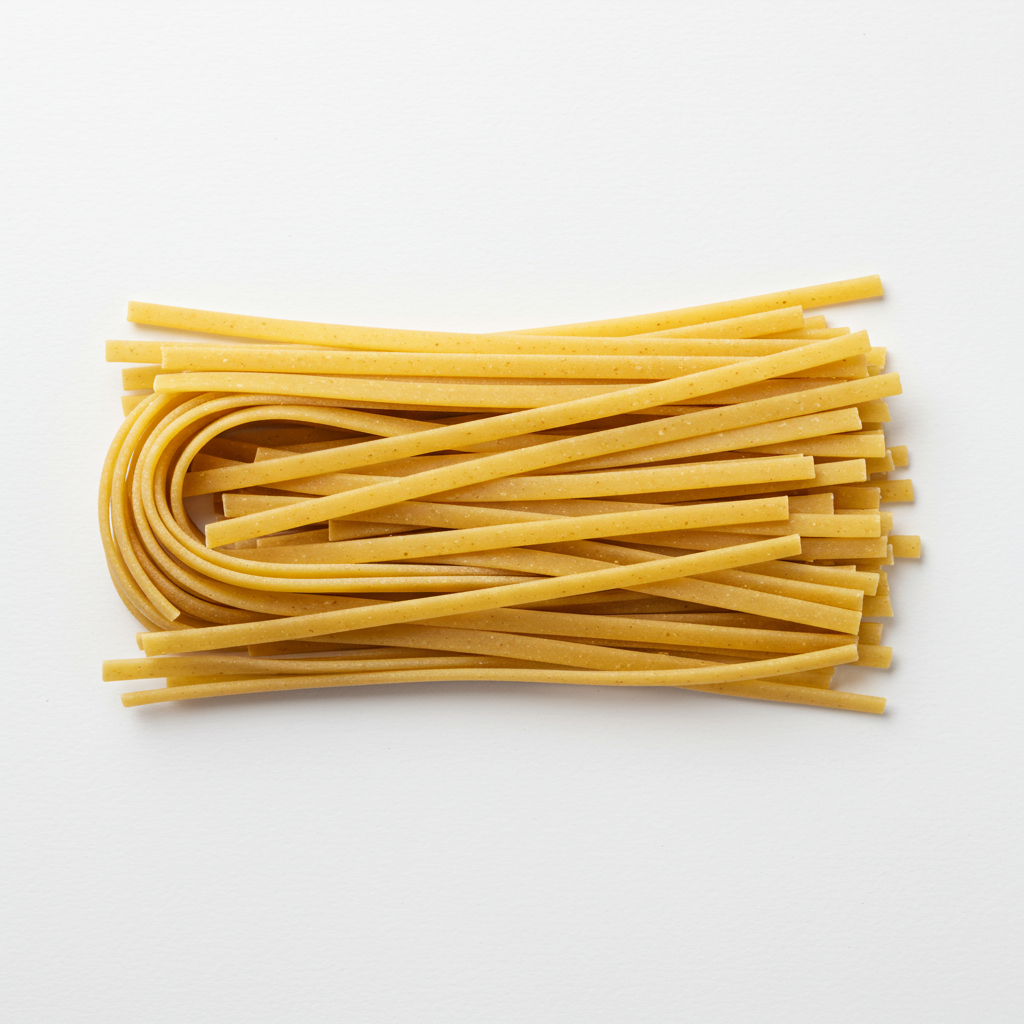
Chickpea Linguine Pasta
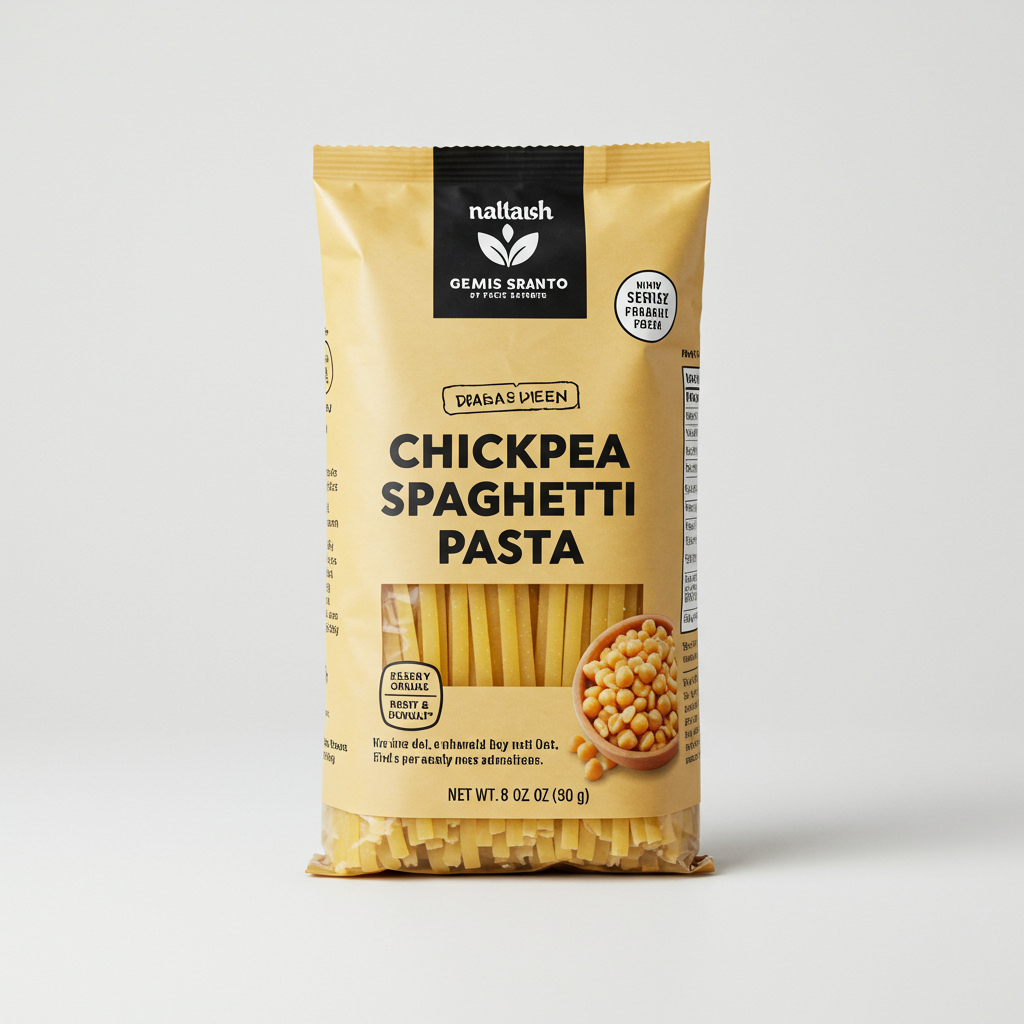
Chickpea Spaghetti

Gluten Free Linguine

Gluten Free Spaghetti
See All
Health Info
Macros
31g
CARBS
1g
FAT
6g
PROTEIN
Allowed on these diets
LOW FAT
HIGH CALCIUM
VEGETARIAN
VEGAN
LACTOSE FREE
Contains these allergens
WHEAT
EGGS

